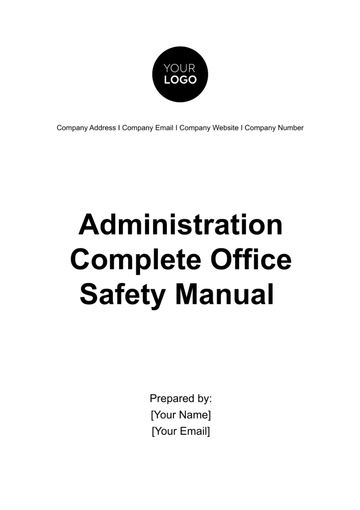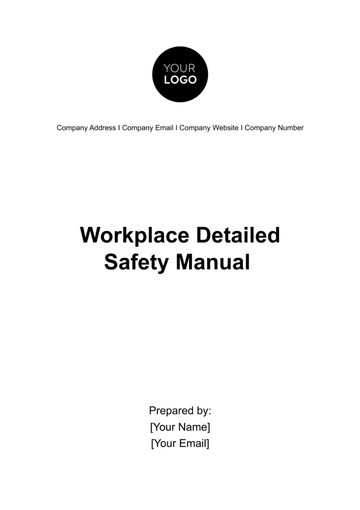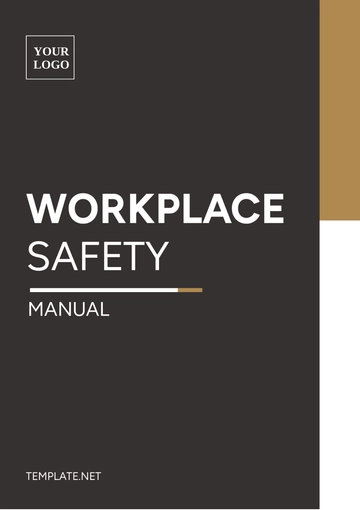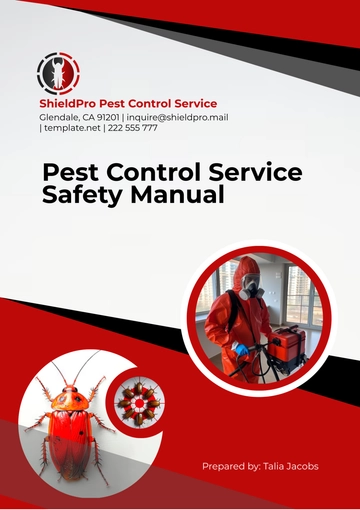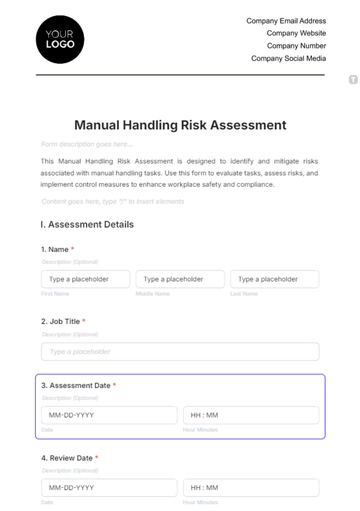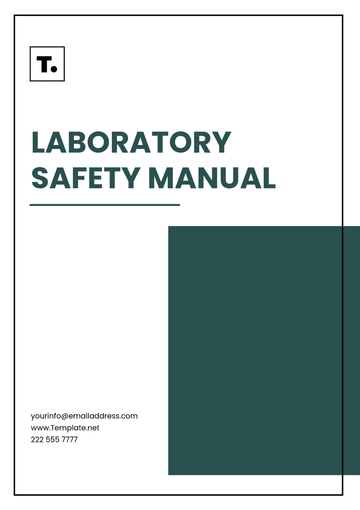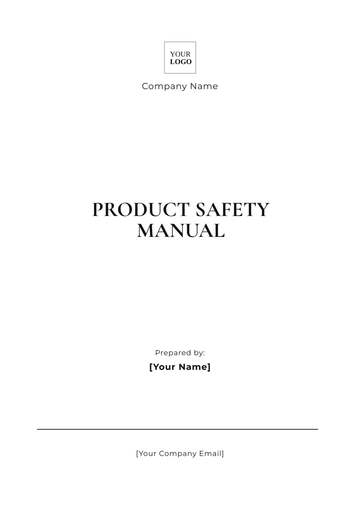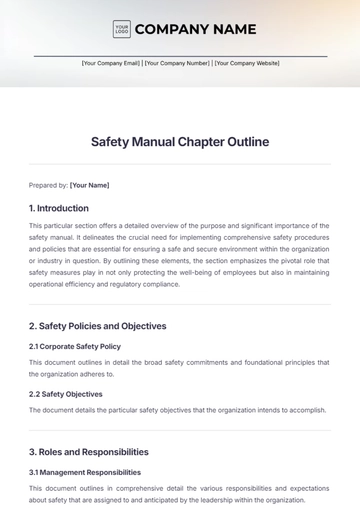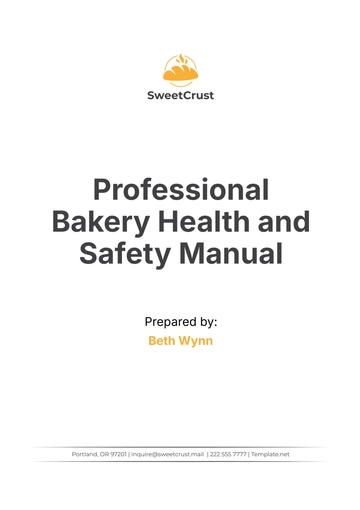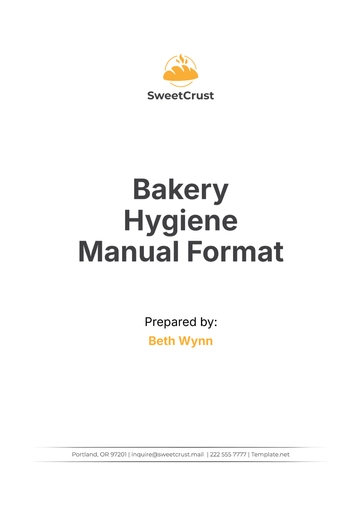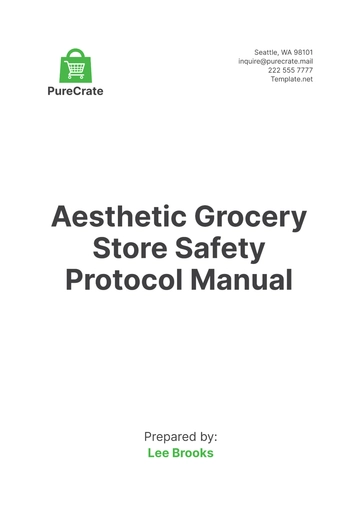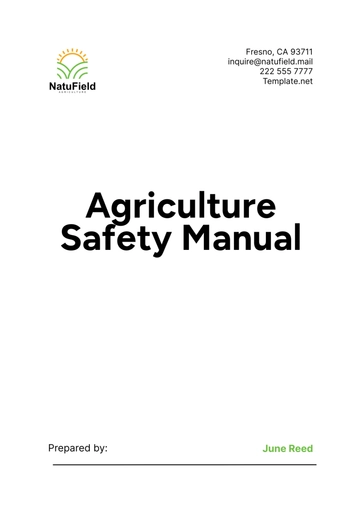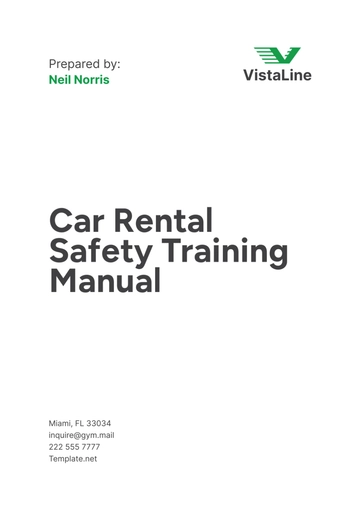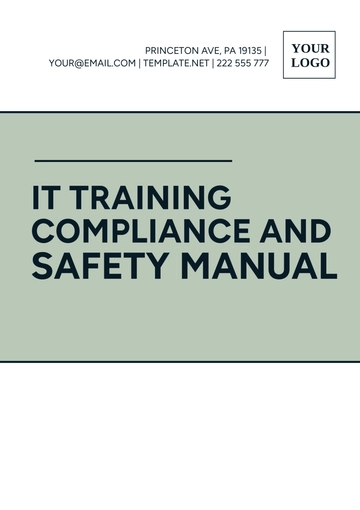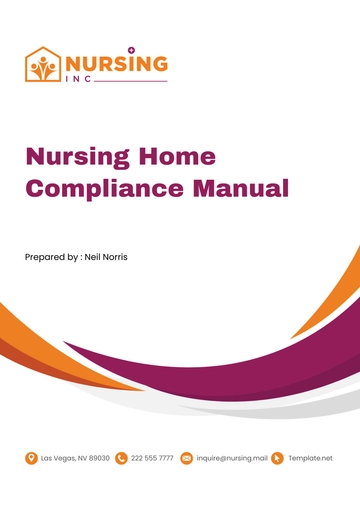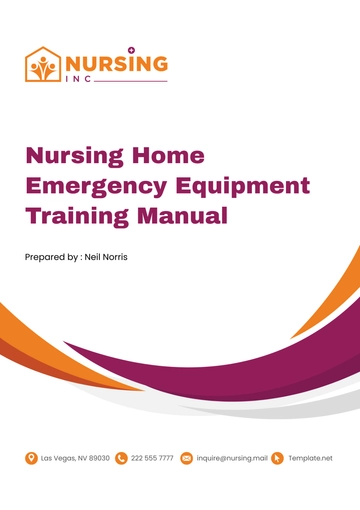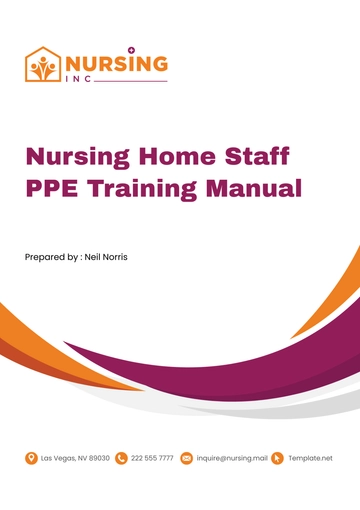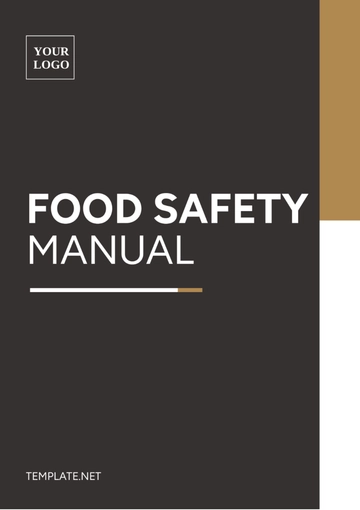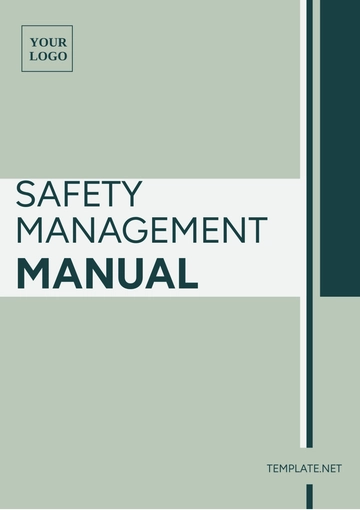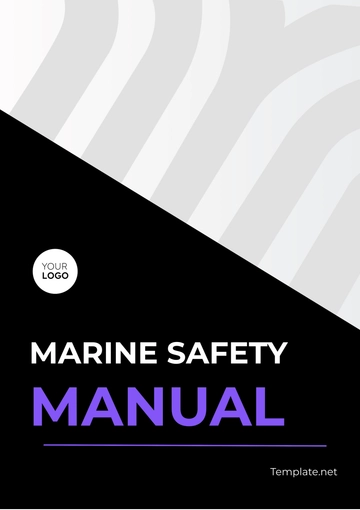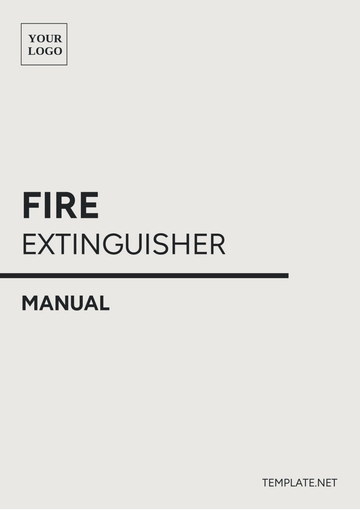Free Safety Risk Management Manual
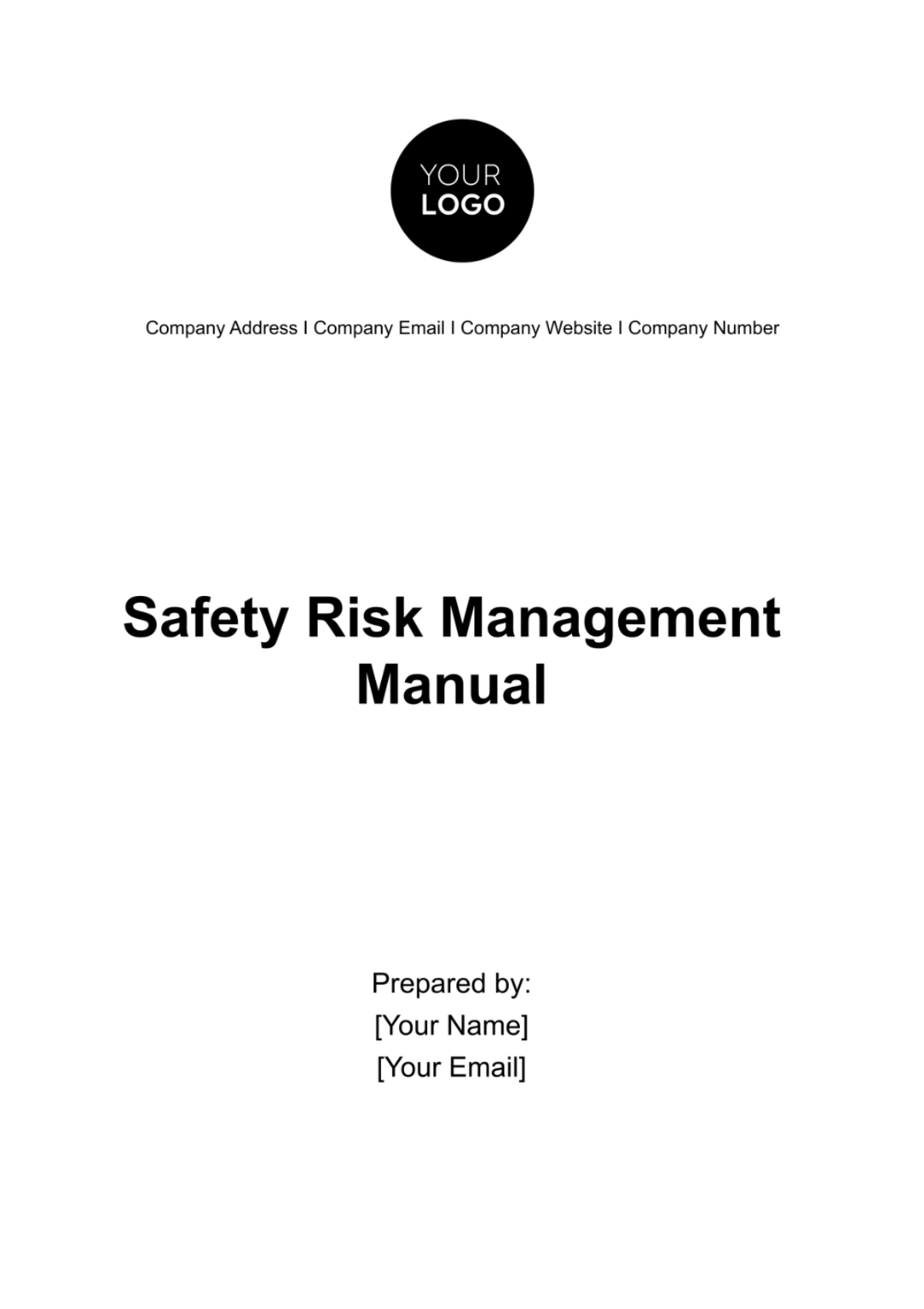
Introduction
A. Purpose of the Manual
The purpose of this Safety Risk Management Manual is to establish a robust framework for identifying, assessing, and mitigating safety risks within [Your Company Name]. This manual aims to ensure the safety of our employees, clients, partners, and the community at large. It serves as a reference guide for all personnel involved in safety management.
B. Scope
The scope of this manual encompasses all activities and operations conducted under the umbrella of [Your Company Name]. It applies to all employees, contractors, suppliers, and stakeholders engaged in activities associated with our organization.
C. Document Control
This Safety Risk Management Manual is a controlled document, managed by the [Your Company Name] Safety Committee. Any updates, revisions, or changes to the manual will follow the established document control procedures, ensuring that the most current version is readily available to all relevant personnel. It is the responsibility of the Safety Committee to review and approve any modifications to this manual.
Safety Risk Management Policy
A. Statement of Commitment
At [Your Company Name], we are unwavering in our commitment to safety. We recognize that the well-being of our employees, clients, partners, and the community depends on effective safety risk management. We pledge to:
Prioritize safety in all our operations.
Comply with all relevant safety laws, regulations, and standards.
Continuously improve our safety practices.
Foster a safety-conscious culture.
Ensure the allocation of necessary resources for safety.
B. Policy Objectives
Our safety risk management policy aims to achieve the following objectives:
Identify and mitigate safety hazards promptly.
Minimize the likelihood of safety incidents.
Provide comprehensive safety training and education.
Encourage reporting of safety concerns without fear of reprisal.
Establish an effective emergency response framework.
C. Roles and Responsibilities
Senior Management: Senior management is responsible for setting safety objectives, providing resources, and ensuring compliance with safety policies and regulations.
Safety Committee: The Safety Committee, led by [Your Name], oversees the development and implementation of safety procedures, conducts risk assessments, and reviews safety performance.
Employees: All employees are accountable for adhering to safety protocols, reporting hazards, participating in safety training, and actively contributing to a safe working environment.
Partners and Contractors: Partners and contractors working with [Your Company Name] must comply with our safety policies and procedures, and they share responsibility for safety on shared worksites.
Clients and Subscribers: Our clients and subscribers play a vital role in safety by adhering to safety guidelines, reporting safety concerns, and collaborating with us to enhance safety measures.
Hazard Identification
A. Definitions
1. Hazard: A hazard is any condition, substance, or situation that has the potential to cause harm to people, property, or the environment.
2. Risk: Risk is the likelihood and consequence of a hazard causing harm. It is typically assessed in terms of severity and probability.
B. Hazard Identification Process
Hazard identification is a systematic process that involves identifying and evaluating potential hazards within [Your Company Name]. This process includes:
Regular site inspections and audits.
Employee and stakeholder reporting.
Incident investigation and analysis.
Review of safety data and incident history.
C. Reporting Hazards
All employees, contractors, and stakeholders are encouraged to report hazards promptly. Hazard reports can be submitted using the [Your Company Website] or by contacting [Your Name] at [Your Company Email].
D. Hazard Assessment
Once a hazard is identified, it is assessed using a standardized risk assessment process. This assessment considers the severity of the potential harm and the likelihood of it occurring.
E. Risk Ranking
After hazard assessment, risks are ranked according to their severity and probability. This ranking helps prioritize which risks require immediate attention and mitigation.
Risk Assessment and Analysis
A. Risk Assessment Methodology
[Your Company Name] uses a comprehensive risk assessment methodology that combines qualitative and quantitative approaches. This methodology includes:
Identification of hazards.
Evaluation of potential consequences.
Assessment of likelihood.
Calculation of risk levels.
B. Risk Matrix
A risk matrix is employed to categorize risks based on their likelihood and consequence. It assists in determining the appropriate risk mitigation strategies.
C. Data Collection
Accurate data collection is crucial for effective risk assessment. Data sources include incident reports, safety inspections, industry benchmarks, and historical data.
D. Risk Analysis Tools
To enhance risk analysis, [Your Company Name] utilizes advanced risk analysis tools and software to model and simulate potential scenarios, aiding in risk mitigation planning.
E. Risk Scoring
Risk scoring assigns numerical values to risks, facilitating objective decision-making. Risks are scored based on severity, likelihood, and other relevant factors.
Risk Mitigation Strategies
A. Risk Control Hierarchy
[Your Company Name] follows a structured risk control hierarchy to mitigate safety risks effectively. The hierarchy consists of the following control measures, ranked from most to least effective:
1. Elimination and Substitution: The highest priority is given to eliminating hazards or substituting them with less hazardous alternatives whenever possible.
2. Engineering Controls: If elimination or substitution is not feasible, engineering controls are implemented to isolate employees and stakeholders from the hazard. These controls include safety barriers, ventilation systems, and safety interlocks.
3. Administrative Controls: Administrative controls involve establishing procedures, guidelines, and safe work practices to reduce risk. This may include scheduling work to minimize exposure or implementing job rotation.
4. Personal Protective Equipment (PPE): PPE is the last line of defense and is used when other controls are not sufficient. It includes items such as helmets, gloves, safety glasses, and protective clothing.
B. Engineering Controls
Our engineering controls are designed and implemented with the utmost priority on safety. Below, we outline some of the key engineering controls in use at our organization:
1. Machine Safeguarding: This includes the installation of physical guards, interlocks, and emergency stop mechanisms on equipment to prevent access to moving parts during operation.
2. Ventilation Systems: These systems effectively capture and remove hazardous particles or gasses from the work environment, ensuring the air quality meets safety standards.
3. Fire Suppression Systems: To mitigate the risk of fire, our facilities are equipped with state-of-the-art fire suppression systems, including automated sprinkler systems and fire extinguishers placed strategically throughout the premises.
4. Emergency Shutdown Systems: These systems are designed to prevent catastrophic incidents and protect personnel.
5. Fall Protection Systems: For work at elevated heights, such as on rooftops or elevated platforms, we employ fall protection systems, including guardrails, safety nets, and personal fall arrest systems, to prevent falls and protect workers.
6. Process Safety Systems: These systems include alarms, emergency shutdowns, and automated controls to prevent and mitigate chemical hazards.
7. Safety Interlocks: These interlocks ensure that specific conditions are met before equipment can be operated, reducing the risk of accidents.
8. Barrier Systems: To protect employees from vehicular traffic or other hazards, we utilize barrier systems, such as bollards, guardrails, and safety barriers, in our facilities.
9. Ergonomic Workstations: This includes adjustable seating, proper lighting, and equipment placement to minimize strain and discomfort.
C. Implementation and Maintenance
The implementation of engineering controls at [Your Company Name] is carried out through a rigorous process:
1. Design and Selection: Our safety engineers work closely with equipment manufacturers and experts to select or design engineering controls that are suitable for the specific hazard.
2. Installation: Engineering controls are installed by qualified personnel in accordance with relevant safety standards and manufacturer recommendations.
3. Testing and Validation: Controls undergo rigorous testing and validation to ensure their effectiveness and reliability.
4. Ongoing Maintenance: Regular inspections and maintenance activities are carried out to ensure that engineering controls remain in optimal working condition.
Incident Reporting and Investigation
A. Incident Reporting Procedures
All incidents, regardless of severity, must be reported promptly. The following steps should be followed:
Notify your immediate supervisor or manager.
Complete an incident report using the designated form or software.
Submit the incident report to the safety department within 24 hours.
B. Investigation Process
Incidents will be thoroughly investigated to determine the root causes and contributing factors. The investigation process includes:
Collecting relevant data and evidence.
Interviewing involved parties.
Analyzing the sequence of events.
Identifying underlying causes.
Developing corrective actions.
C. Corrective Actions
Based on the findings of the investigation, corrective actions will be developed and implemented to prevent similar incidents in the future. These actions may include:
Process changes.
Additional training.
Equipment modifications.
Procedural updates.
D. Documentation
All incident reports, investigation findings, and corrective actions taken will be documented and maintained in accordance with [Your Company Name] documentation and record-keeping procedures.
Emergency Response
A. Emergency Response Plan
[Your Company Name] maintains a robust Emergency Response Plan (ERP) designed to address a wide range of potential emergency situations. The ERP includes the following components:
1. Emergency Contact Information: A comprehensive list of emergency contact numbers for relevant authorities, medical facilities, and key personnel.
2. Emergency Procedures: Step-by-step instructions for responding to specific emergency scenarios, such as fires, chemical spills, medical emergencies, and natural disasters.
3. Evacuation Routes and Assembly Points: Clear maps and directions to evacuation routes and designated assembly points for all personnel.
4. Communication Protocols: Guidelines for effective communication during emergencies, including the use of alarms, PA systems, and two-way radios.
B. Evacuation Procedures
In the event of an evacuation, [Your Company Name] follows established evacuation procedures to ensure the safety of all personnel. These procedures include:
1. Alarm Activation: When an alarm sounds, all personnel are to cease their current tasks and proceed to the nearest exit.
2. Evacuation Routes: Employees are familiarized with primary and secondary evacuation routes.
3. Assembly Points: Employees gather at designated assembly points to account for all personnel.
4. Head Counts: Head counts are conducted to ensure that all employees and visitors are safe and accounted for.
C. Communication during Emergencies
During emergencies, effective communication is paramount. [Your Company Name] uses a multi-tiered approach to communication, including:
1. PA Systems: Public address systems are used to broadcast important announcements and instructions.
2. Two-Way Radios: Key personnel are equipped with two-way radios for real-time communication.
3. Mobile Alerts: Emergency alerts are sent via mobile devices to notify personnel of evolving situations.
D. Training and Drills
Regular training and emergency drills are conducted to ensure that all personnel are well-prepared for emergencies. These drills simulate various emergency scenarios, allowing employees to practice evacuation procedures, communication, and first aid response.
Safety Training and Education
A. Training Needs Assessment
[Your Company Name] conducts a thorough training needs assessment to identify the specific safety training requirements for different roles and responsibilities within the organization. The assessment takes into account job functions, potential hazards, and regulatory requirements.
B. Training Programs
Based on the training needs assessment, [Your Company Name] develops and delivers comprehensive safety training programs. These programs cover a wide range of topics, including:
Hazard recognition and control.
Emergency response procedures.
Safe work practices and procedures.
Proper use of personal protective equipment (PPE).
Incident reporting and investigation.
C.Training Records
All safety training sessions are documented, and records are maintained to ensure that employees receive the necessary training. These records include:
Training dates and durations.
Names of trainers.
Names of attendees.
Training materials and resources.
D. Continuous Learning
Safety is an evolving field, and [Your Company Name] is committed to continuous learning and improvement. Employees are encouraged to stay updated on the latest safety practices and regulations through ongoing education and training opportunities.
Safety Audits and Inspections
A. Audit and Inspection Schedule
[Your Company Name] maintains a regular schedule for safety audits and inspections to assess the effectiveness of safety measures and identify areas for improvement. The audit and inspection schedule includes:
Quarterly safety audits of all facilities and work areas.
Monthly equipment inspections to ensure proper functioning.
Annual safety assessments of all processes and procedures.
B. Audit and Inspection Procedures
Safety audits and inspections are conducted by trained personnel who follow established procedures:
1. Comprehensive Checklists: Auditors and inspectors use detailed checklists to assess compliance with safety standards, regulations, and internal policies.
2. Observations: Auditors and inspectors observe work practices, equipment usage, and environmental conditions to identify potential hazards.
3. Interviews: Personnel may interview employees to gather insights into safety practices and identify concerns.
C. Reporting and Follow-up
Upon completion of safety audits and inspections, findings are documented, and reports are generated. Findings may include identified hazards, compliance issues, and recommendations for improvement. Follow-up actions include:
1. Corrective Actions: If hazards or non-compliance issues are identified, corrective actions are developed and implemented promptly.
2. Reporting: Audit and inspection reports are submitted to relevant management and safety committees for review.
3. Continuous Improvement: Findings and recommendations are used to drive continuous improvement in safety policies, procedures, and practices.
Performance Monitoring and Measurement
A. Key Performance Indicators (KPIs)
[Your Company Name] tracks key performance indicators related to safety to monitor and measure safety performance effectively. These KPIs include:
Incident rates (e.g., lost-time incidents, near misses).
Compliance with safety regulations.
Completion of safety training.
Emergency response times.
Safety audit and inspection results.
B. Data Collection and Analysis
Data related to safety performance are collected and analyzed on an ongoing basis. Data sources include incident reports, safety audits, inspections, and training records. Data analysis involves:
Identifying trends and patterns.
Evaluating the effectiveness of safety measures.
Identifying areas where additional measures are needed.
C. Management Review
Safety performance is subject to regular management review to ensure that safety objectives are met and that corrective actions are taken as necessary. Management reviews include:
Review of safety KPIs and data.
Assessment of the effectiveness of safety policies and procedures.
Evaluation of the progress of safety initiatives.
Health & Safety Templates @ Template.net
- 100% Customizable, free editor
- Access 1 Million+ Templates, photo’s & graphics
- Download or share as a template
- Click and replace photos, graphics, text, backgrounds
- Resize, crop, AI write & more
- Access advanced editor
Enhance workplace safety with Template.net's Safety Risk Management Manual Template. This editable and customizable manual, accessible through our Ai Editor Tool, equips you with comprehensive risk management strategies. Mitigate potential hazards effectively, tailor procedures to your organization's needs, and ensure a secure work environment with this versatile template from Template.net.

